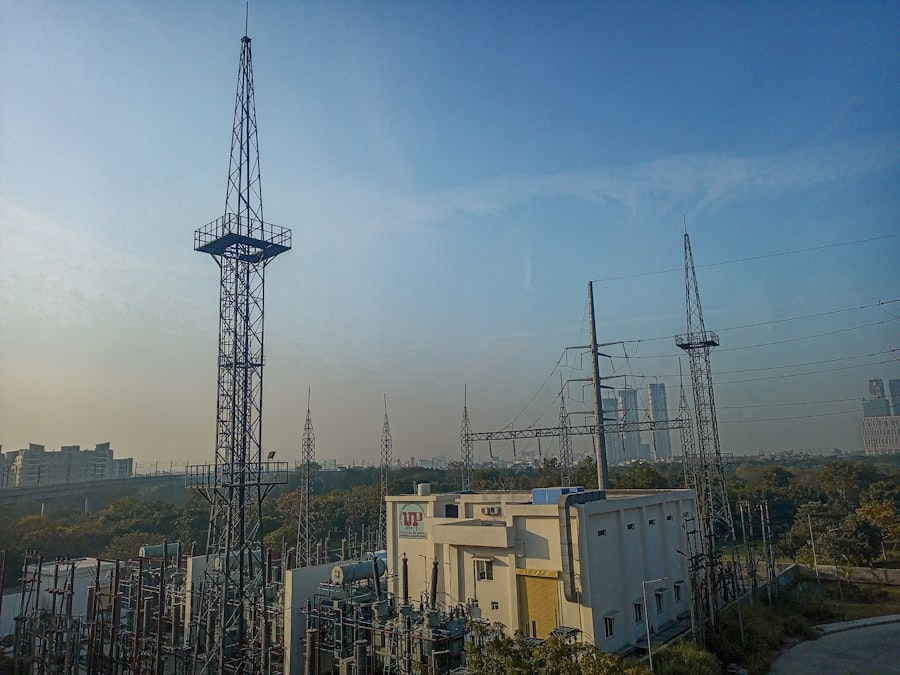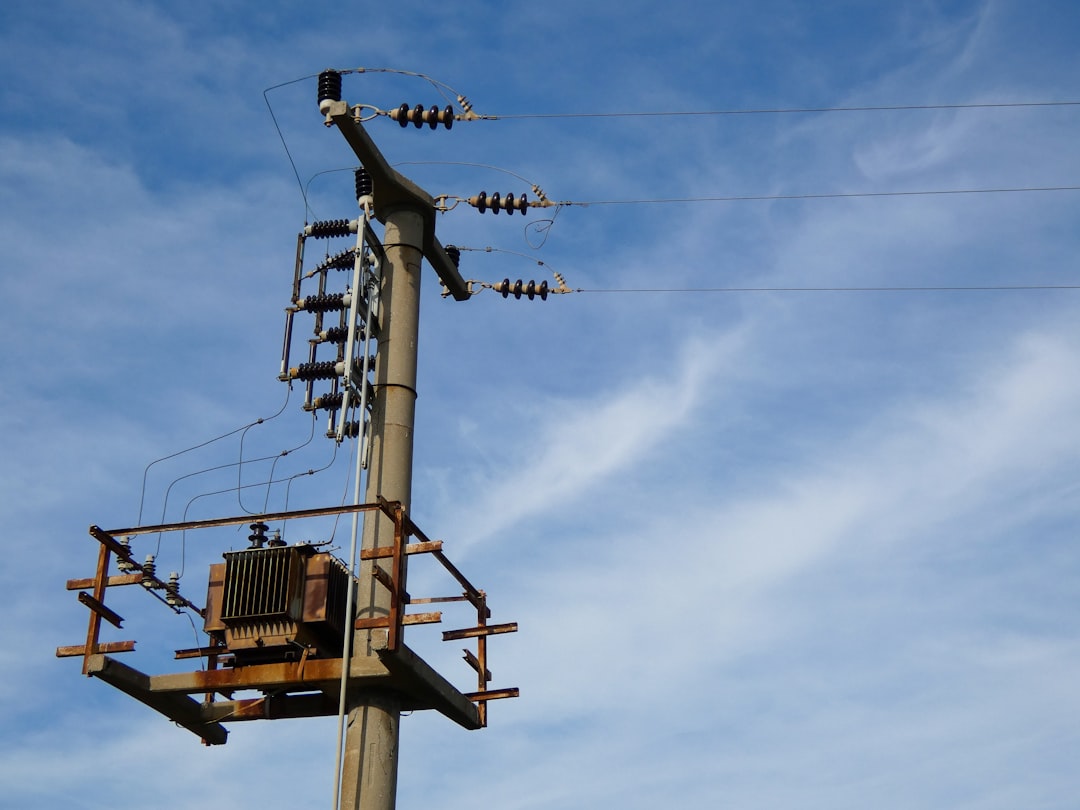Solar flares, massive bursts of radiation from the sun, pose a significant threat to modern technology, particularly power grids. These explosive events occur when magnetic energy that has built up in the solar atmosphere is released, resulting in a sudden increase in brightness and energy output. The electromagnetic radiation emitted during a solar flare can travel at the speed of light, reaching Earth in just a few minutes.
This rapid arrival can disrupt communication systems, navigation tools, and, most critically, power grids. The potential for widespread outages and damage to electrical infrastructure makes understanding solar flares essential for safeguarding modern society. The sun operates on an approximately 11-year cycle of solar activity, with periods of heightened activity known as solar maximums.
During these times, the frequency and intensity of solar flares increase, raising concerns about their impact on Earth.
As society becomes increasingly reliant on electricity for daily functions, the need to comprehend the nature of these solar phenomena and their implications for power grids becomes ever more pressing.
Key Takeaways
- Solar flares can pose a serious threat to power grids, causing widespread disruption and damage.
- The impact of solar flares on power grids can lead to blackouts, equipment damage, and financial losses.
- Power grids are vulnerable to solar flares due to their reliance on long transmission lines and sensitive equipment.
- Strategies for securing power grids against solar flares include investing in protective measures and early warning systems.
- Collaboration with space agencies for solar flare monitoring and investing in resilient power grid technology are crucial for future power grid security.
Impact of Solar Flares on Power Grids
The impact of solar flares on power grids can be profound and multifaceted. When a solar flare occurs, it can generate geomagnetic storms that induce electric currents in power lines and transformers. These geomagnetically induced currents (GICs) can overload electrical systems, leading to equipment failures and widespread blackouts.
Historical events, such as the 1989 Quebec blackout, serve as stark reminders of the potential consequences of solar activity. In that incident, a severe geomagnetic storm caused a nine-hour outage affecting millions of people, highlighting the vulnerability of power grids to solar phenomena. Moreover, the economic ramifications of such disruptions can be staggering.
Power outages not only affect residential consumers but also disrupt businesses and critical infrastructure, leading to significant financial losses. The cascading effects of a power grid failure can extend beyond immediate outages, impacting transportation systems, healthcare facilities, and emergency services. As the world becomes more interconnected and reliant on technology, the stakes associated with solar flare impacts on power grids continue to rise.
Vulnerabilities in Power Grids to Solar Flares

Power grids are inherently vulnerable to the effects of solar flares due to their complex and interconnected nature. The vast network of transmission lines, substations, and transformers that make up a power grid is susceptible to geomagnetic disturbances. These disturbances can cause fluctuations in voltage levels and induce currents that exceed the design limits of electrical components.
Many existing power grid infrastructures were not designed with the potential impacts of solar flares in mind, leaving them exposed to risks that could lead to catastrophic failures. Additionally, the geographical distribution of power grid components can exacerbate vulnerabilities. Regions closer to the poles are more susceptible to geomagnetic storms due to their proximity to the Earth’s magnetic field lines.
This means that areas with high latitudes may experience more severe impacts from solar activity than those located closer to the equator. As climate change continues to alter weather patterns and increase the frequency of extreme weather events, the interplay between these factors and solar activity further complicates the resilience of power grids.
Strategies for Securing Power Grids Against Solar Flares
| Strategy | Description |
|---|---|
| Geomagnetic Disturbance (GMD) Monitoring | Implementing systems to monitor geomagnetic disturbances caused by solar flares. |
| Grid Hardening | Strengthening power grid infrastructure to withstand GMD events. |
| Emergency Response Plans | Developing plans to quickly respond to power grid disruptions caused by solar flares. |
| Space Weather Forecasting | Utilizing advanced forecasting techniques to predict solar flare events. |
To mitigate the risks posed by solar flares, it is essential to implement comprehensive strategies aimed at securing power grids. One effective approach involves upgrading existing infrastructure to enhance its resilience against geomagnetic disturbances.
Additionally, utilities can invest in advanced monitoring systems that provide real-time data on geomagnetic activity, allowing operators to take proactive measures during periods of heightened solar activity. Another critical strategy is the development of robust contingency plans that outline specific protocols for responding to solar flare events. These plans should include guidelines for reducing load on vulnerable components during geomagnetic storms and procedures for quickly restoring power after an outage.
Training personnel in these protocols ensures that operators are prepared to act swiftly and effectively in the face of potential disruptions.
Importance of Early Warning Systems for Solar Flares
Early warning systems play a crucial role in protecting power grids from the impacts of solar flares. By monitoring solar activity and providing timely alerts about impending geomagnetic storms, these systems enable grid operators to take preemptive actions that can mitigate damage. Advanced satellite technology allows scientists to observe solar flares as they occur and predict their potential impact on Earth’s magnetic field.
The implementation of early warning systems not only enhances grid resilience but also fosters collaboration among various stakeholders in the energy sector. Utilities can work together with meteorological agencies and space weather organizations to share data and insights about solar activity. This collaborative approach ensures that all parties are informed and prepared for potential disruptions, ultimately leading to a more robust response to solar flare threats.
Implementing Protective Measures for Power Grid Infrastructure

Implementing protective measures for power grid infrastructure is essential for minimizing the risks associated with solar flares. One effective measure is the installation of surge protectors and filters designed specifically to handle geomagnetically induced currents. These devices can help prevent damage to transformers and other critical components by diverting excess energy away from sensitive equipment.
In addition to physical upgrades, utilities should also consider adopting smart grid technologies that enhance monitoring and control capabilities. Smart grids utilize advanced sensors and communication networks to provide real-time data on system performance, allowing operators to identify vulnerabilities and respond quickly to emerging threats. By integrating these technologies into existing infrastructure, utilities can create a more resilient power grid capable of withstanding the impacts of solar flares.
Role of Government and Regulatory Bodies in Protecting Power Grids
Government and regulatory bodies play a vital role in protecting power grids from the threats posed by solar flares. They are responsible for establishing standards and regulations that ensure utilities implement adequate protective measures against geomagnetic disturbances. By setting clear guidelines for infrastructure resilience and requiring regular assessments of vulnerability, these entities can help drive improvements across the energy sector.
Furthermore, government agencies can facilitate research initiatives aimed at understanding solar activity and its effects on power systems. Funding studies that explore innovative technologies and strategies for mitigating risks associated with solar flares can lead to significant advancements in grid security. By prioritizing collaboration between public and private sectors, regulatory bodies can foster an environment where knowledge sharing and innovation thrive.
Collaboration with Space Agencies for Solar Flare Monitoring
Collaboration with space agencies is essential for effective monitoring of solar flares and their potential impacts on Earth’s power grids. Organizations such as NASA and the National Oceanic and Atmospheric Administration (NOAA) have established programs dedicated to studying solar activity and providing forecasts related to space weather events. By partnering with these agencies, utilities can gain access to valuable data that informs their preparedness efforts.
Such collaborations can also lead to the development of advanced predictive models that enhance understanding of how solar flares interact with Earth’s magnetic field. Improved forecasting capabilities enable grid operators to anticipate geomagnetic storms more accurately, allowing them to implement protective measures before significant disruptions occur. This proactive approach not only safeguards infrastructure but also helps maintain public confidence in the reliability of power systems.
Investing in Resilient Power Grid Technology
Investing in resilient power grid technology is crucial for addressing the challenges posed by solar flares. As technology continues to evolve, new solutions emerge that enhance grid security against geomagnetic disturbances. For instance, advancements in energy storage systems allow utilities to store excess energy generated during periods of low demand, providing a buffer against potential outages caused by solar activity.
Moreover, research into alternative energy sources such as microgrids offers promising avenues for enhancing resilience. Microgrids operate independently or in conjunction with larger grids, allowing localized energy generation and distribution. This decentralized approach reduces reliance on centralized infrastructure, making it easier to manage disruptions caused by solar flares or other external factors.
Training and Preparedness for Power Grid Operators
Training and preparedness for power grid operators are essential components of an effective response strategy against solar flare threats. Operators must be well-versed in recognizing signs of geomagnetic disturbances and understanding their potential impacts on grid operations. Regular training sessions that simulate various scenarios related to solar flare events can help ensure that personnel are equipped with the knowledge and skills needed to respond effectively.
Additionally, fostering a culture of preparedness within utility organizations encourages proactive thinking among employees at all levels. By emphasizing the importance of readiness and resilience, utilities can create an environment where staff members are motivated to identify vulnerabilities and contribute ideas for improving grid security.
The Future of Power Grid Security in the Face of Solar Flares
The future of power grid security in the face of solar flares will likely involve a combination of technological advancements, regulatory frameworks, and collaborative efforts among various stakeholders. As society continues to rely heavily on electricity for everyday functions, ensuring the resilience of power grids against natural phenomena becomes increasingly critical. Emerging technologies such as artificial intelligence (AI) and machine learning may play a pivotal role in enhancing predictive capabilities related to solar activity.
By analyzing vast amounts of data from various sources, these technologies could provide insights into patterns associated with solar flares, enabling more accurate forecasting and timely responses. In conclusion, addressing the threat posed by solar flares requires a multifaceted approach that encompasses understanding their nature, implementing protective measures, fostering collaboration among stakeholders, and investing in resilient technologies. As the world becomes more interconnected through electricity, safeguarding power grids against natural phenomena like solar flares will be paramount for ensuring a stable and reliable energy future.
In recent years, the importance of safeguarding power grids from solar flares has become increasingly evident, as these natural phenomena can cause significant disruptions to electrical infrastructure. A related article on this topic can be found on Freaky Science, which delves into the various strategies and technologies being developed to protect power grids from the adverse effects of solar flares. For more detailed insights, you can read the full article by visiting Freaky Science. This resource provides a comprehensive overview of the challenges and solutions associated with maintaining grid stability in the face of solar activity.
WATCH THIS 🌍 Earth’s Magnetic Field Is About To Flip: The Crisis You Need to Know
FAQs
What are solar flares?
Solar flares are sudden and intense bursts of energy and radiation from the sun’s surface. They can cause disturbances in the Earth’s atmosphere and magnetic field.
How do solar flares affect power grids?
Solar flares can cause geomagnetic storms, which can induce electric currents in power lines and transformers. This can lead to power outages and damage to electrical infrastructure.
What measures can be taken to protect power grids from solar flares?
Protecting power grids from solar flares involves implementing measures such as installing surge protectors, using transformer shunts, and developing advanced monitoring and forecasting systems to prepare for potential geomagnetic storms.
What are the potential consequences of power grid failure due to solar flares?
Power grid failure due to solar flares can lead to widespread blackouts, disruption of essential services, and economic losses. It can also impact communication systems and transportation networks.
Are there international efforts to protect power grids from solar flares?
Yes, there are international collaborations and initiatives aimed at improving the resilience of power grids to solar flares. These efforts involve sharing knowledge, developing standards, and coordinating response strategies.
